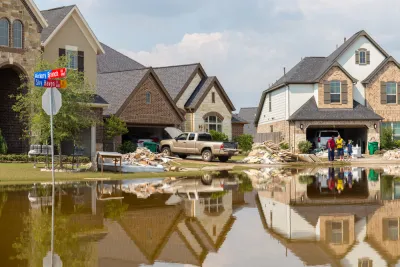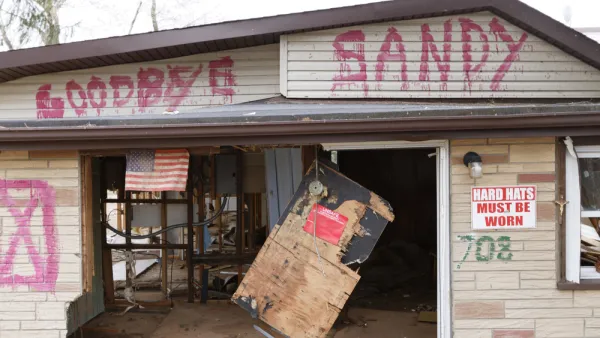The Rockefeller Foundation has cited costs and a new strategic direction to explain why it abruptly cut off the program this year. While the work may live on in some form, the move underscores the risks of relying on private funding.

"Established in 2013 by the Rockefeller Foundation in the wake of Hurricane Katrina and Superstorm Sandy, 100 Resilient Cities was born out of the idea that local governments needed help planning for disasters and combating persistent social maladies," Laura Bliss writes. With Rockefeller writing the checks, it grew into a groundbreaking effort to embed resilience into the conceptual vocabulary of local governments.
But this spring, the foundation decided to wind the program down. "For local governments, the whiplash may be a reminder of the risks of relying of private dollars to create public policies," Bliss writes.
Some elements of Rockefeller's resilience work may survive. The Rockefeller Foundation is helping bankroll the Adrienne Arsht-Rockefeller Foundation Resilience Center, for example, and it has "confirmed that it may keep some elements of the 100 Resilient Cities program alive."
As for why Rockefeller pulled the plug, the rationale partly has to do with cost: "while academic research supports the theory of building urban resilience through institutional change, it was challenging to measure short-term results directed by the program." Rockefeller's president Raj Shah also wants to steer the foundation in a different direction, prioritizing measurable outcomes in areas like global health.
100 Resilient Cities' president, Michael Berkowitz, has "told staff that he and a group of soon-to-be-former 100RC officers were preparing to start a new nonprofit with the mission of helping cities implement resilience projects." A new venture would work on a project-by-project basis, Bliss writes, rather than activating a network of cities. And it will draw on multiple funding sources. A formal announcement is expected this July.
FULL STORY: The Rise, Fall, and Possible Rebirth of 100 Resilient Cities

National Parks Layoffs Will Cause Communities to Lose Billions
Thousands of essential park workers were laid off this week, just before the busy spring break season.

Retro-silient?: America’s First “Eco-burb,” The Woodlands Turns 50
A master-planned community north of Houston offers lessons on green infrastructure and resilient design, but falls short of its founder’s lofty affordability and walkability goals.

Delivering for America Plan Will Downgrade Mail Service in at Least 49.5 Percent of Zip Codes
Republican and Democrat lawmakers criticize the plan for its disproportionate negative impact on rural communities.

Test News Post 1
This is a summary

Test News Headline 46
Test for the image on the front page.

Balancing Bombs and Butterflies: How the National Guard Protects a Rare Species
The National Guard at Fort Indiantown Gap uses GIS technology and land management strategies to balance military training with conservation efforts, ensuring the survival of the rare eastern regal fritillary butterfly.
Urban Design for Planners 1: Software Tools
This six-course series explores essential urban design concepts using open source software and equips planners with the tools they need to participate fully in the urban design process.
Planning for Universal Design
Learn the tools for implementing Universal Design in planning regulations.
EMC Planning Group, Inc.
Planetizen
Planetizen
Mpact (formerly Rail~Volution)
Great Falls Development Authority, Inc.
HUDs Office of Policy Development and Research
NYU Wagner Graduate School of Public Service





























